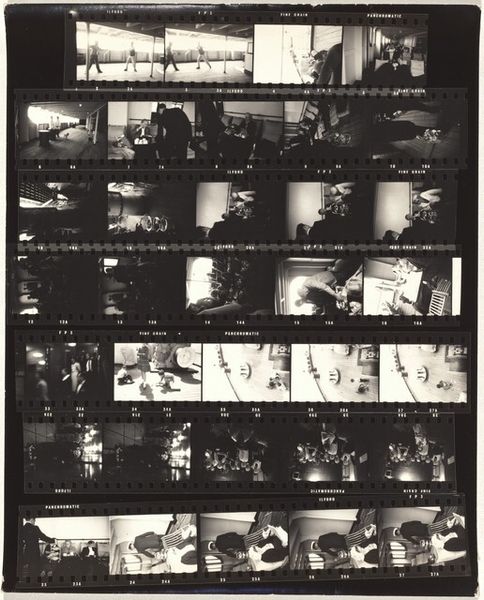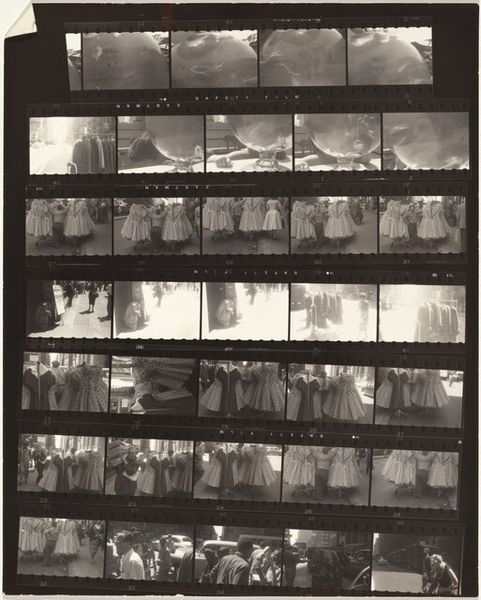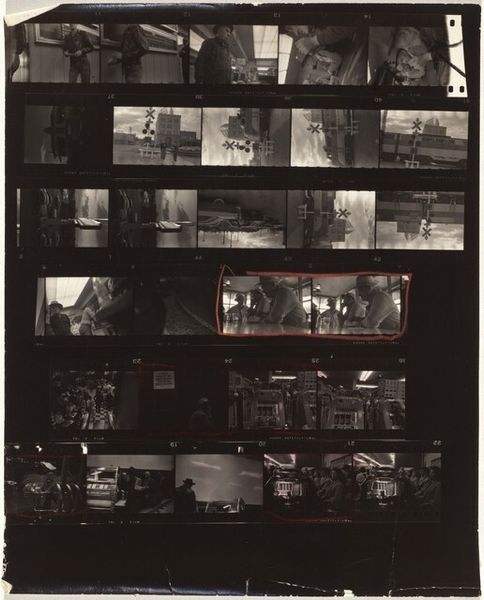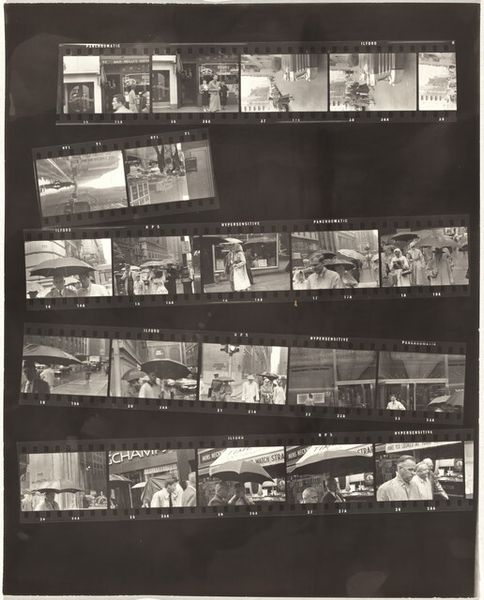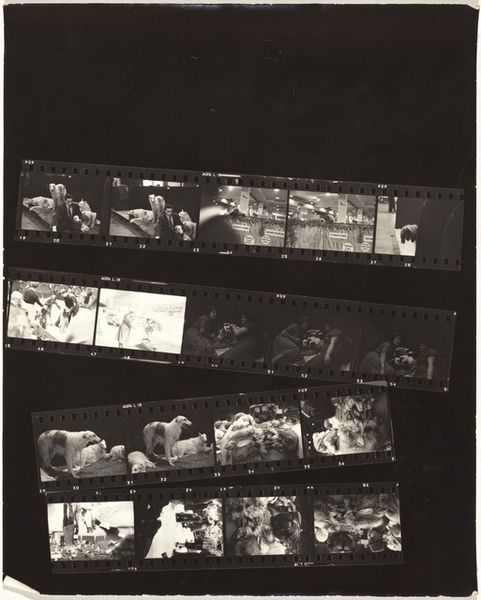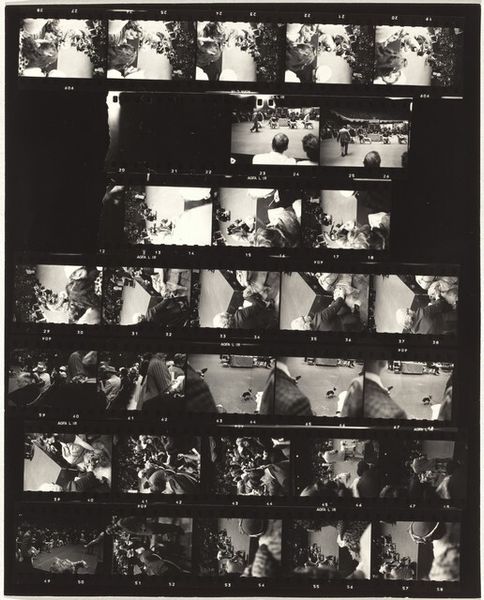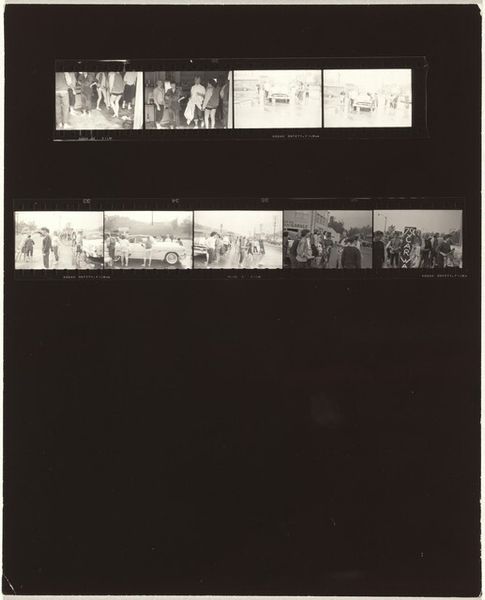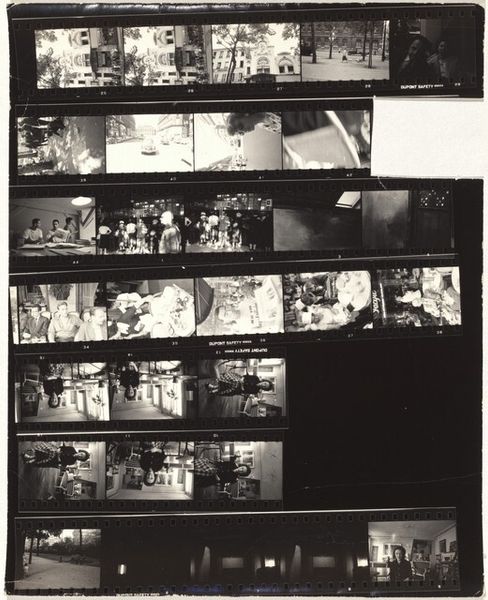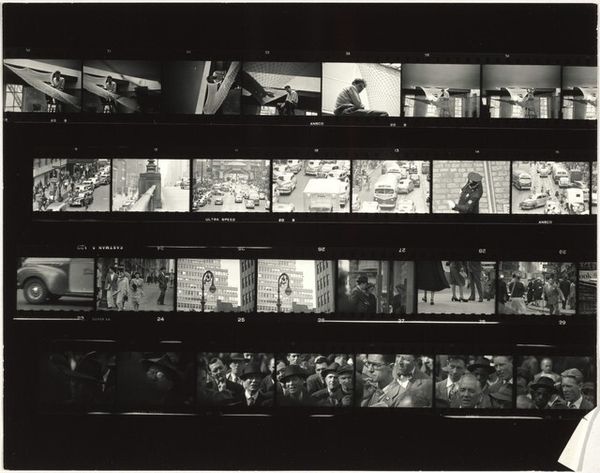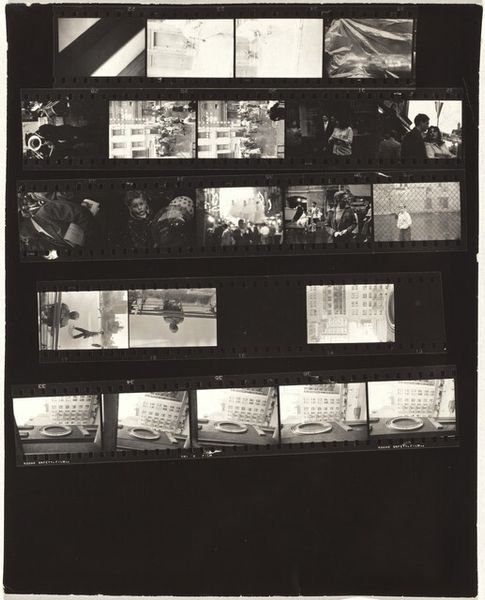
photography, gelatin-silver-print
#
wedding photograph
#
wedding photography
#
social-realism
#
street-photography
#
photography
#
gelatin-silver-print
#
monochrome photography
#
pop-art
#
realism
#
monochrome
Dimensions: overall: 25.3 x 20.5 cm (9 15/16 x 8 1/16 in.)
Copyright: National Gallery of Art: CC0 1.0
Curator: Looking at this contact sheet, I'm immediately struck by the fractured, almost voyeuristic, quality of the images. There's a tension between observation and intrusion. Editor: This is a gelatin-silver print made by Robert Frank, titled “Guggenheim 419--Los Angeles,” dating from 1955 to 1956. It's a contact sheet, essentially the unedited proof from a roll of film, giving us a raw, behind-the-scenes look at Frank’s photographic process. This approach itself can be seen as challenging established photographic norms. Curator: Exactly. The social context is so important. This was during Frank's road trip across America that resulted in "The Americans." A work that, at the time, ruffled a lot of feathers for its unflinching portrayal of social alienation and racial tension. Here, the use of a contact sheet format already rejects established photographic ideals. We're not meant to see the polished final image, but the process itself. Editor: Right. It pulls back the curtain on image making and hints at Frank’s working methodology. These were images produced during a Guggenheim Fellowship and so his practice was funded and institutionally supported to produce art which raises questions about the very nature of institutional critique. Curator: That tension is palpable. We see snippets: crowds of people, reflections in cars, skewed angles, blurred images. He’s capturing fleeting moments, reflecting the anxieties of a rapidly changing America. We see signs of wealth in the cars, of course, and then it cuts away and gets abstracted; we begin to read urban decay. It's all fragmented and disorienting, mirroring the cultural and political landscape of the time. What does Frank's positioning reveal about the status and treatment of photographic art? Editor: I think his position also reflects the public role of art, and the politics of imagery that it disseminates. The blurred quality, combined with the overall presentation makes for a viewing that destabilizes art history. Curator: Absolutely. Even in its imperfections, it forces us to confront uncomfortable truths about ourselves and society, both then and now. Thanks, this has really illuminated the sociopolitical depths of the image for me. Editor: For me as well, thanks for digging deep into the themes in this photograph.
Comments
No comments
Be the first to comment and join the conversation on the ultimate creative platform.

